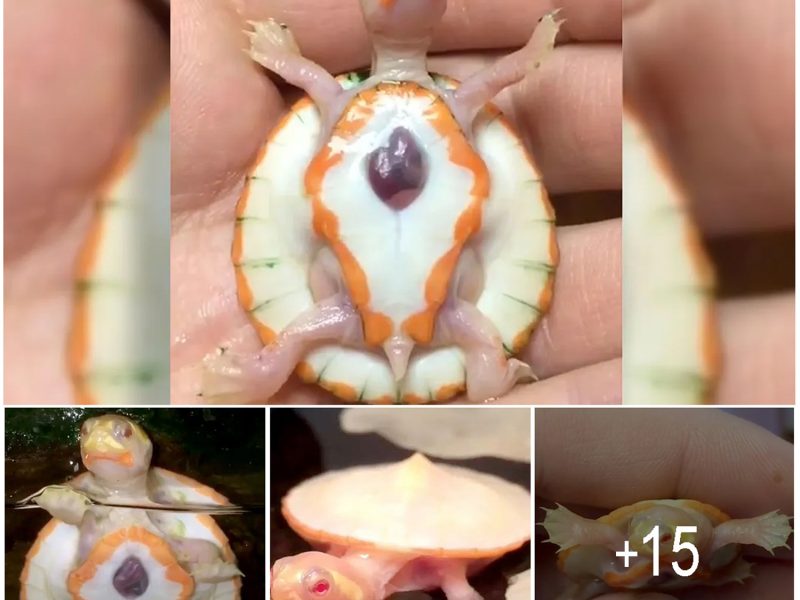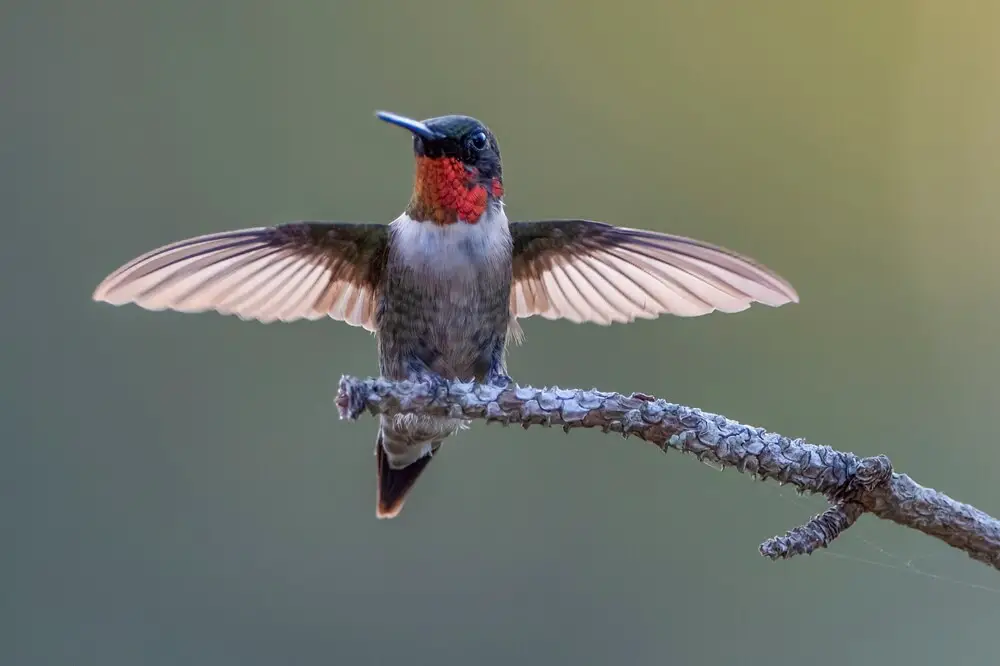
The ruby-throated hummingbird is a well-known and common hummingbird that covers a large part of the eastern United States.
These speedy “flying jewels” visit nectar feeders in people’s backyards in the summer. They are spotted in rural and suburban areas, along the edges of forests and streams, and in meadows.
This article provides a close-up look at the ruby-throated hummingbird. Continue on to see some beautiful photos and learn fascinating facts.
Ruby-Throated Hummingbird
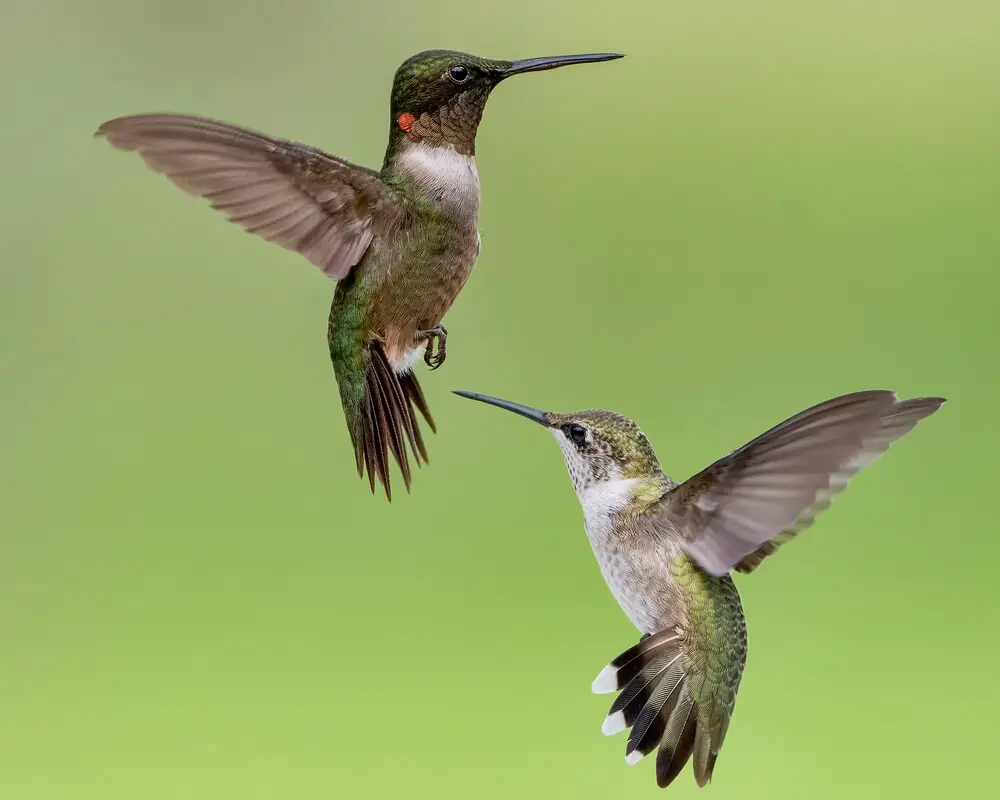 n
n
Overviewa
Ruby-throated hummingbirds are well-known and easy to recognize.
They have their dazzling trademark colors of emerald green backs and brilliant red gorgets (throats). Females are duller in color than males and lack the red gorget. However, they are larger in size.
Male
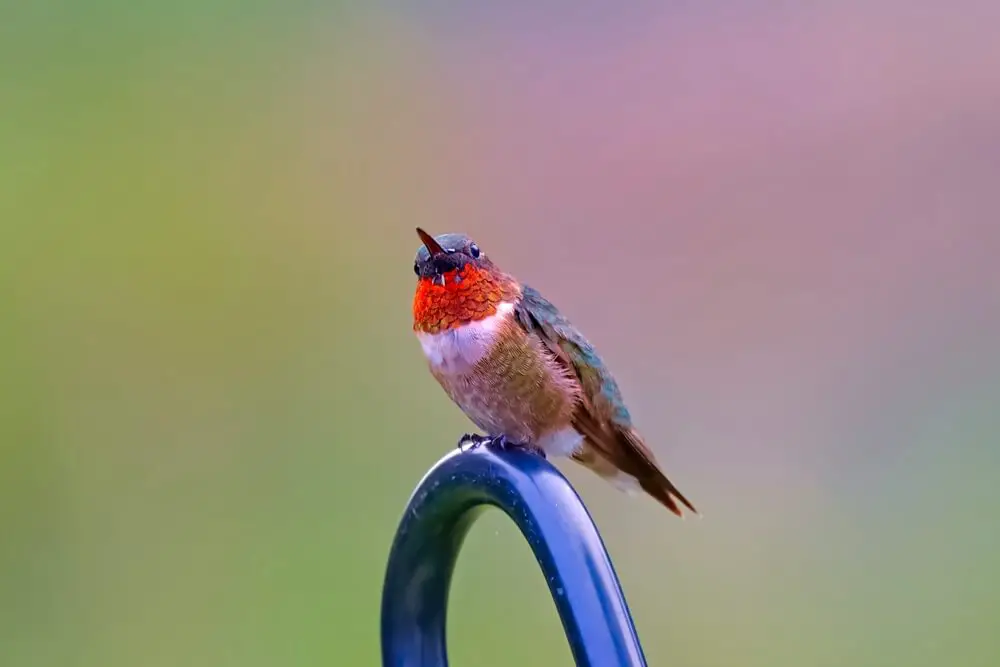
A male ruby-throated hummingbird has a green back and crown, black mask, and ruby-red gorget. The red throat is iridescent and may appear red or black with movement in the sunlight.
His belly is a dusky brown with hints of white. He has a short, black, forked tail.
Immature (juvenile) males are primarily brown, black, and white. They have some light green iridescence on the back and some red feathers on the throat.
Female

A female ruby-throated hummingbird does not have a ruby-red gorget. She is mostly white in her underbelly and has a dusky-colored mask. Her upper parts are bright, metallic green.
The female’s outer feathers have white tips. Her tail has a blunt end with white-tipped feathers.
Females are about 15% to 20% larger than their male counterpartsày
Behavior
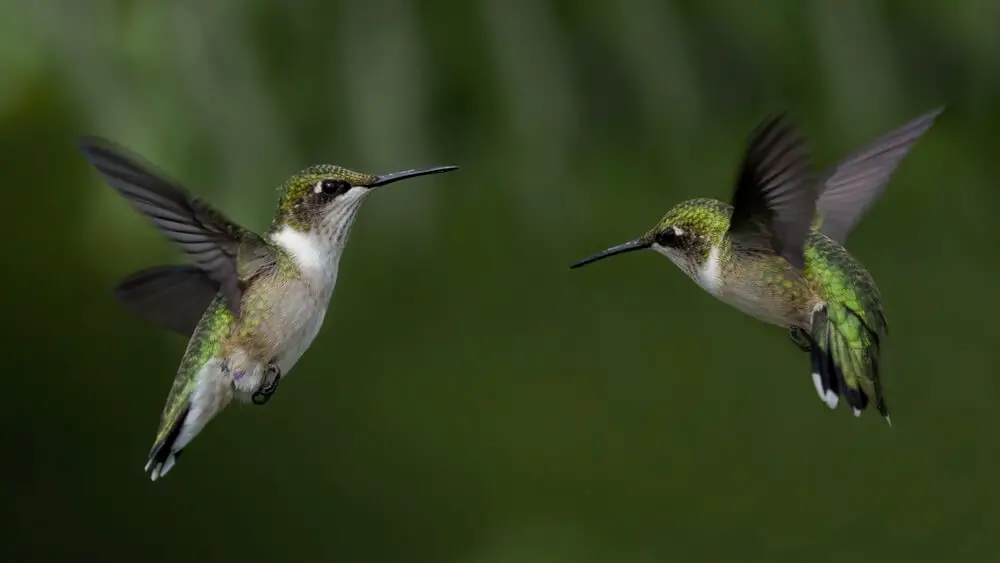
Ruby-throated hummingbirds are solitary birds, living alone. They briefly interact for breeding purposes. The female builds the nest, incubates the eggs, and cares for the chicks on her own.
These birds are skilled flyers. They can stop mid-air (hover), and adjust their position up, down, backward, upside down, and sideways with incredible control. They can even fly in the rain!
They dart between nectar sources and nests. They will perch on small twigs and other vegetation, shuffling side to side while they keep a lookout.
Males and females are territorial over food sources and nests. They will chase or poke other hummingbirds or bees with their long bills. Males also puff up and flash their gorgets to show aggression.
However, they can become accustomed to humans, and with enough patience, they may eat from a nectar feeder in a person’s hand.
Range
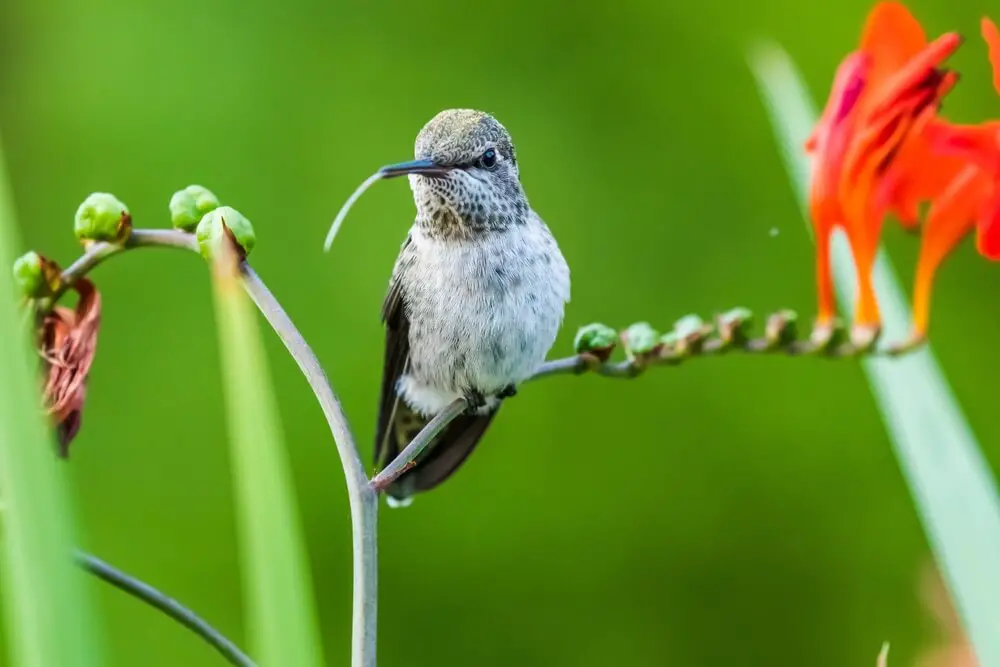
The ruby-throated hummingbird is found in the eastern half of the United States, as well as southern Canada for the breeding season. This large area extends from the middle of the country to the eastern coast.
The wide range of this hummingbird gives many people the opportunity to see them visit feeders and flowers as they raise their young.
Diet
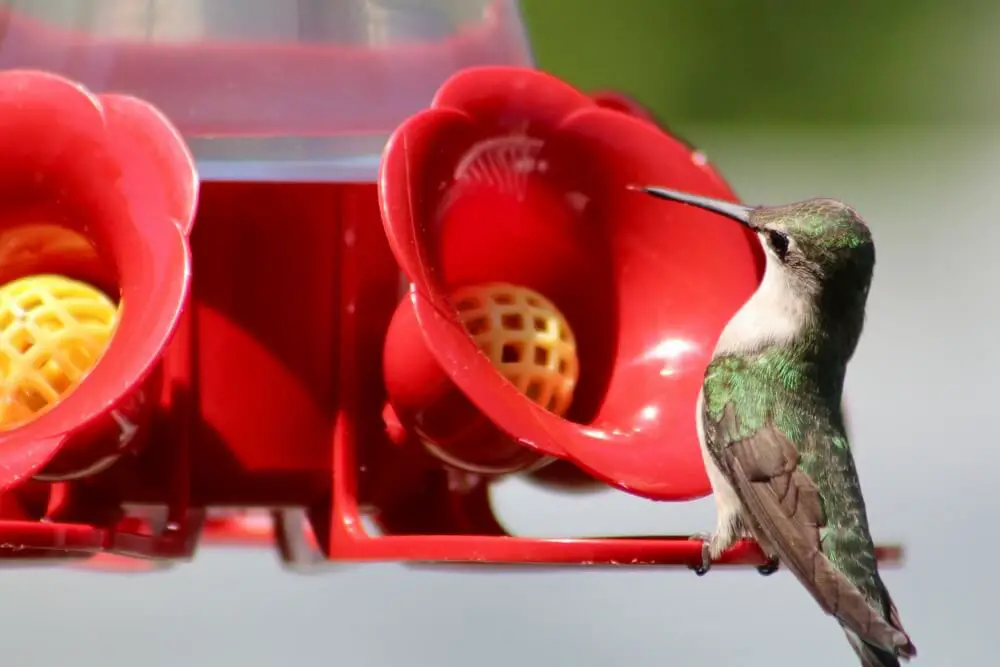
These birds love to feed on the nectar of red and orange tubular flowers. These flowers include those such as cardinal flowers, bee balms, red buckeyes, trumpet creepers, and red morning glories.
They also love man-made nectar (sugar water) and are drawn to red-colored feeders. (Do not use red nectar.) They also may drink tree sap.
In addition to nectar, hummingbirds eat insects by catching them on the wing or pulling them from spider webs. They eat insects such as mosquitoes, small bees, gnats, and aphids.
Habitat
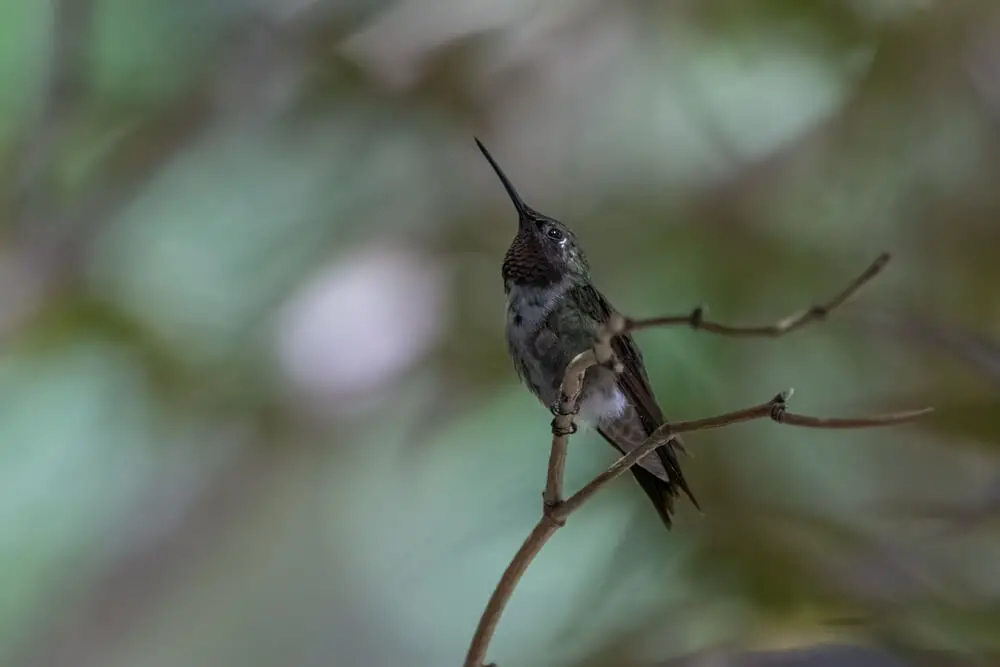
Ruby-throated hummingbirds are commonly found in areas with deciduous trees. This includes backyards in suburban and rural areas.
They are most commonly found in old fields, along forest edges, in meadows and orchards, and along the borders of streams.
When they migrate to wintering grounds, they often live in citrus groves, scrub, hedgerows, and dry forests.
Breeding
The ruby-throated hummingbird’s breeding season runs from March through July. They are the only breeding hummingbird in eastern North America. Mid-May is the busiest month of the breeding season.
Males will court females by flying in a U-shaped pattern to display themselves as high as 50 feet above the female.
If the female perches, he will perform fast side-to-side flights in front of her. If the female likes what she sees, she bows and ruffles her tail feathers to accept his proposal.
Care For The Offspring
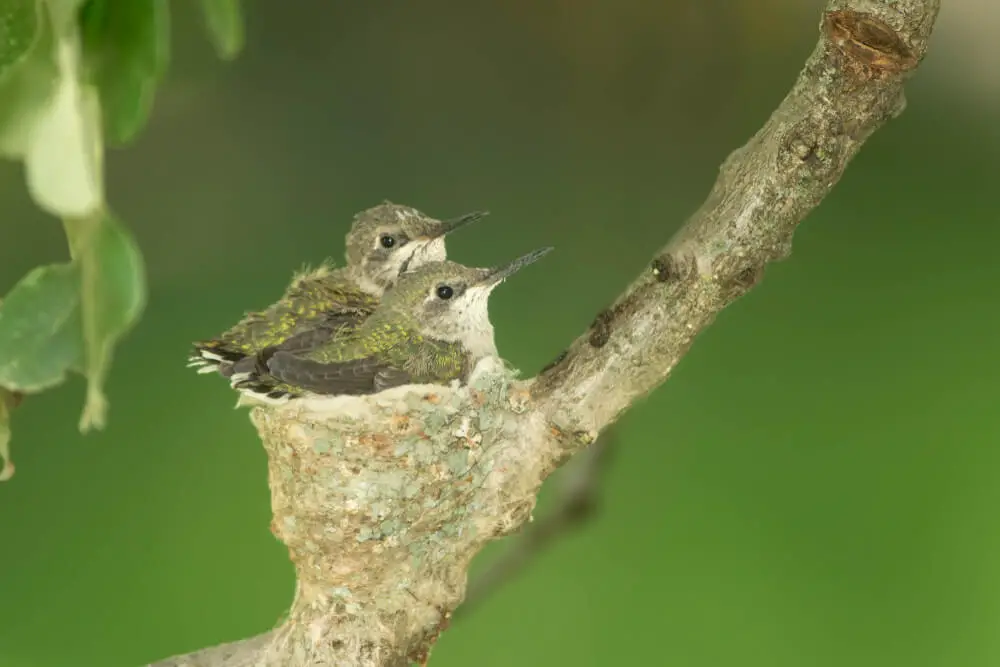
After mating, the female is solely responsible for nest building and caring for the offspring. Nests are built commonly in deciduous trees but can be found in pine trees or manmade wires.
She uses her bill and body to form a 2-inch nest with spiderwebs, pine resin, grass, and soft fibers. She camouflages the outside of the tiny cup-shaped nest with leaves, moss, and lichen.
She then lays two tiny eggs, about the size of jelly beans. She incubates them and about 2 weeks later they hatch.
The female regurgitates nectar and insects to feed her nestlings. Three weeks after hatching, the fledglings are ready to leave the nest.
Ruby-throated hummingbirds typically only have 1 brood a year, but can produce as many as 3. Often she will build another nest while feeding her previous brood.
Migration

In early fall, the ruby-throated hummingbird is ready to migrate to warmer areas. They feed heavily before migrating to store enough energy and fat for a journey that can take up to 20 hours to complete.
They fly south to Mexico, Costa Rica, and Panama. Some may travel a short distance to the very tip of southern Florida.
Thousands of migrating ruby-throated hummingbirds fly over the open waters of the Gulf of Mexico. They travel nonstop for up to 500 miles. Others may go around, traveling along the Texas coast.
Males often return back to the United States before the females do in the spring.
Conservation
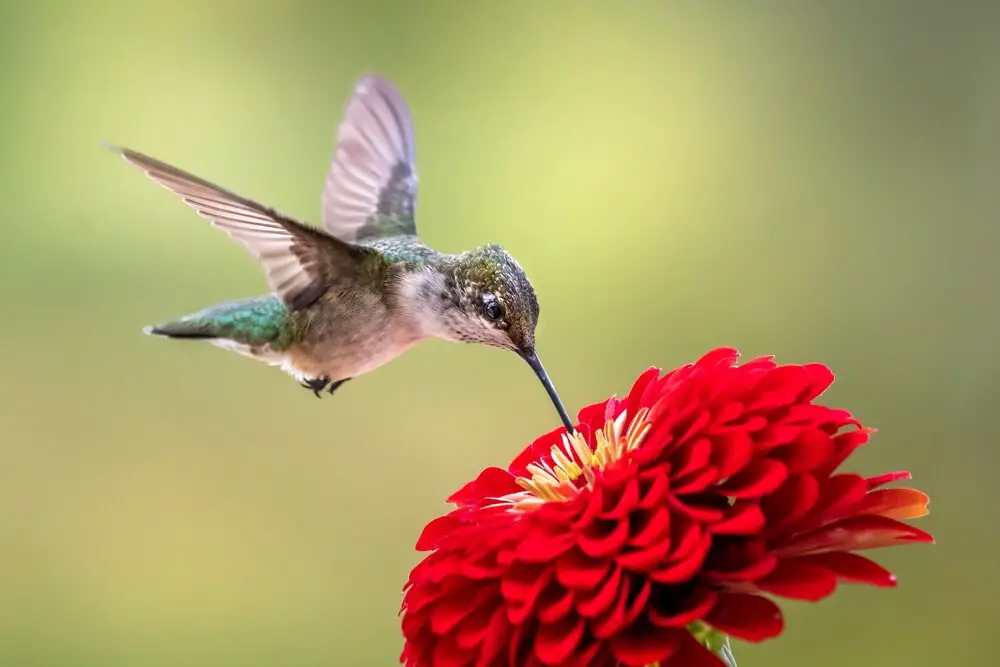
The population of the ruby-throated hummingbird has steadily increased over the years. They are a species of low conservation conversion.
However, hummingbirds can be harmed by conflicts with people and animals. This includes dirty nectar feeders, cats, window collisions, or entrapment inside structures.
How To Attract Ruby-Throated Hummingbirds
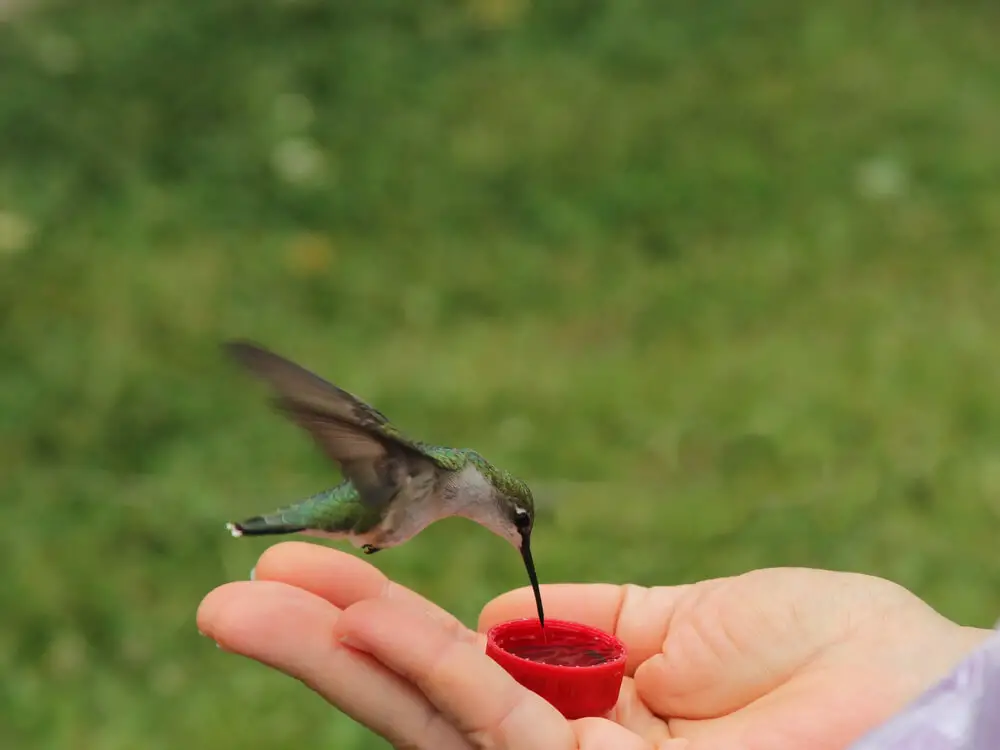
There are many ways to attract hummingbirds to your yard. These include the following:
- Planting red and orange tubular, nectar-rich flowers in your landscape and gardens
- Hanging nectar-filled feeders away from windows and in partially sunny spots
- Adding a bird bath
The ruby-throated hummingbird’s bold and curious personality will also lead them to feed from other spots. This includes hanging plants and even your hand if you hold still with a cup of nectar.
Homemade nectar should be 1 part sugar mixed with 4 parts of water. The nectar should be changed regularly and the feeder cleaned to avoid cloudiness or mold that can make the hummingbird sick.
If you hang more than one feeder, keep them at least 10 feet apart to avoid hummingbird fights.
Ruby-Throated Hummingbird Facts

Here are several fun facts about the ruby-throated hummingbird:
- They beat their wings approximately 53 times per second.
- The hummingbird’s color vision allows them to see ultraviolet colors that humans cannot see.
- They have short legs that make it difficult for them to walk or hop. They often shuffle side to side when perched.
- Hummingbirds drink nectar from feeders by extracting the liquid with their tongues. They move their tongues in and out of the port about 13 times per second.
- Hummingbirds consume food sources up to twice their body weight each day.
